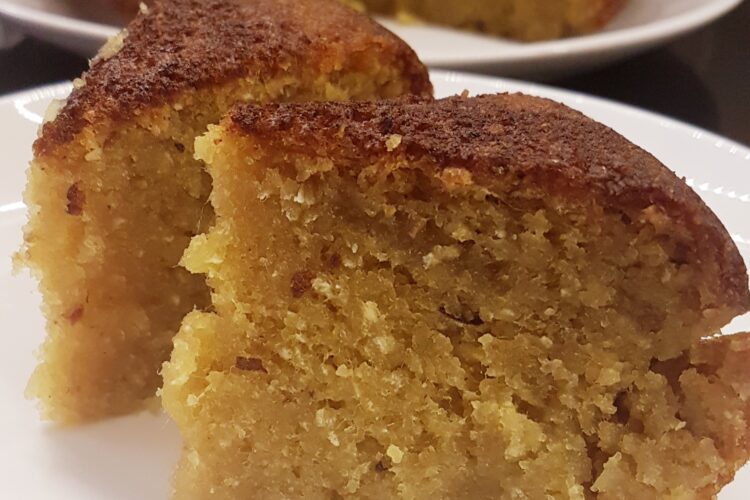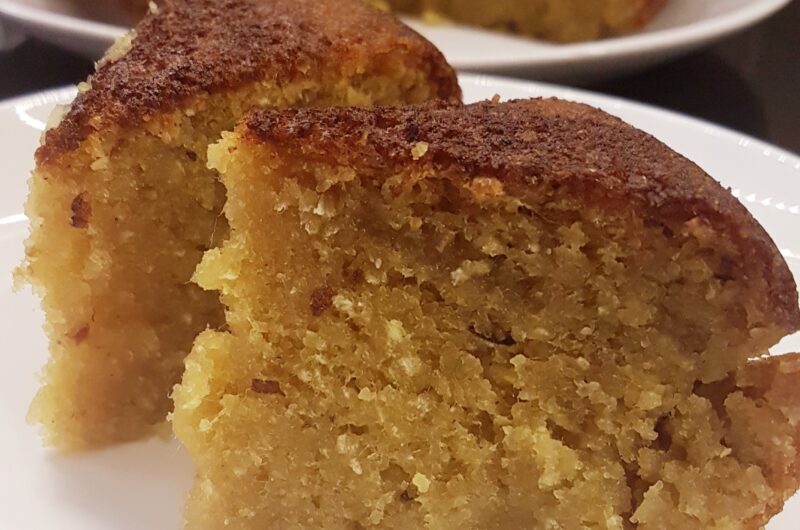Dhonas or Ripe Jackfruit Cake recipe with step by step photos and instructions.
Learn how to make jackfruit cake without eggs. Failproof recipe for jackfruit cake with the correct ratio of ingredients.
Just a few decades ago, bringing home a jackfruit was like a family event. All members would gear up to clean the jackfruit and relish it. However, with the ready-to-eat culture setting in we have somewhere lost this beautiful custom that created special and unforgettable childhood memories. It subtly taught us life lessons that fruits of hardwork (literally and figuratively) are sweet. That to get something good in life you need to get your hands messy!
What is Dhonas?
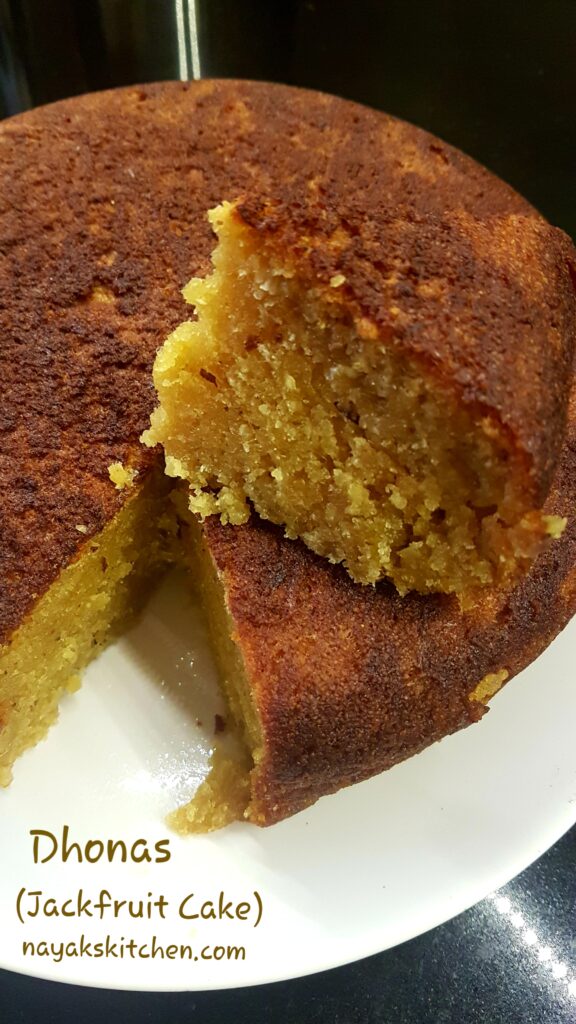
Jackfruit cake is known as ‘Dhonas‘ or ‘Pansache Dhonas‘ in Konkani. It is called ‘Dhondas‘ in Marathi. It is also referred to as ‘Pansachi Bhakri‘. ‘Panas‘ means jackfruit in Konkani. Dhonas is a traditional Goan recipe. It is made using jackfruit pulp, rava (semolina), jaggery, grated coconut and ghee. The ‘rasaal‘ variety of jackfruit is used to make jackfruit dhonas.
Dhonas is a classic Goan delicacy. Although I have referred to it here as ‘jackfruit cake’ (just to give you an idea) it is nowhere similar to a regular cake because it does not use maida (refined wheat flour), baking powder or baking soda. Also, there is no butter used, just a little ghee to enhance the flavour. Jaggery is used to impart a little sweetness as the jackfruit is already sweet enough. T
his recipe for jackfruit cake does not use eggs. Hence, dhonas is eggless and a very healthy recipe. A similar version of this is the delectable Goan ‘Tavsalli‘ (cucumber cake).
The secret of making a jackfruit cake with the right texture, taste and softness is the right ratio of ingredients. I have used standard measuring cups and spoons to make it easier. This cake is perfected after a lot of trial and error. So this is a fail-proof recipe.
The Jack of all fruits “JACKFRUIT”
If mango is the king of fruits then jackfruit is no less competent than it. Did you know it is the state fruit of Kerala and Tamilnadu? Also, India is the largest producer of jackfruits in the world. In Goa, you will find a jackfruit tree in almost every household in the rural areas.
The jackfruit is truly a marvel of nature. Hard and tough on the outside but soft and luscious inside. The hard outer covering has small thorn-like spikes that protects the fruit. Inside the jackfruit there are yellow fruit pods (called as gare in Konkani) that have a seed inside.
The jackfruit grows in the tropical regions of south-west India and is the largest among all tree fruits. Both unripe and ripe fruits are used for different culinary purposes. It has a sweet, fruity smell. The fragrance of a ripe jackfruit is very strong. If you ever bring home a jackfruit the entire house would fill with a strong aroma once it has ripened.
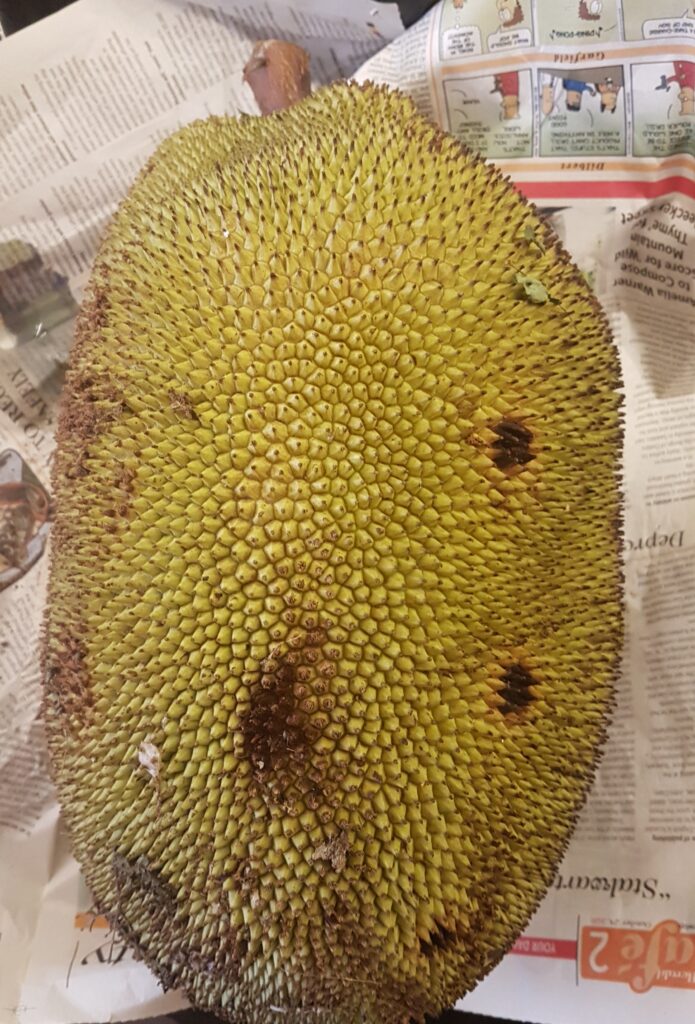
Types of Jackfruit
There are 2 types of jackfruit :-
- Kapo
- Rasaal
Kapo – The ‘kapo’ panas or jackfruit pods (gare) are firm and dry. This variety is mostly consumed directly. Also, cleaning it is a tedious job and can turn a bit messy as it has a lot of sap (deek in Konkani). It has many fibers (thread-like strands) to which the pods are firmly attached.
Rasaal – The ‘rasaal’ panas has soft and juicy pods (gare). Hence, this variety of panas is mainly used in various traditional culinary preparations like the dhonas, saath, pansachyo patoleo etc. Also, it is easy to clean as it has less sap. Since, it has very less fibers as compared to a kapo jackfruit, the pods are easy to pluck. Below you can see pics of an opened rasaal jackfruit.
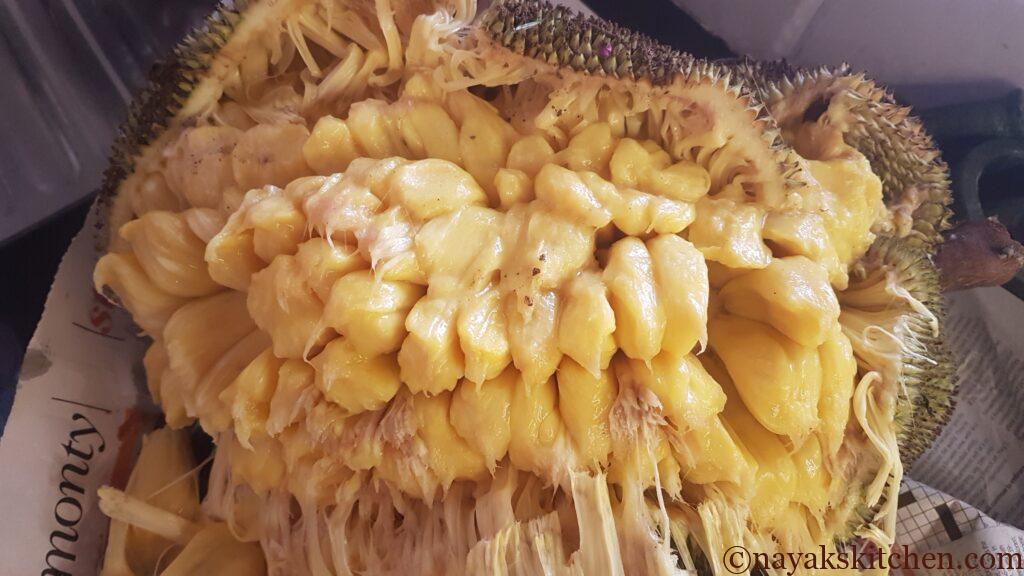
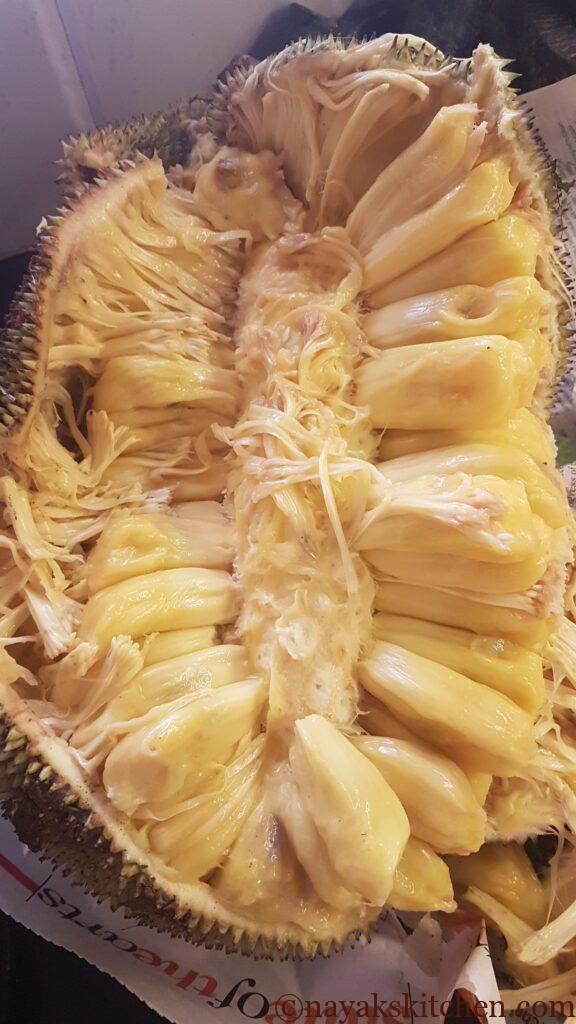
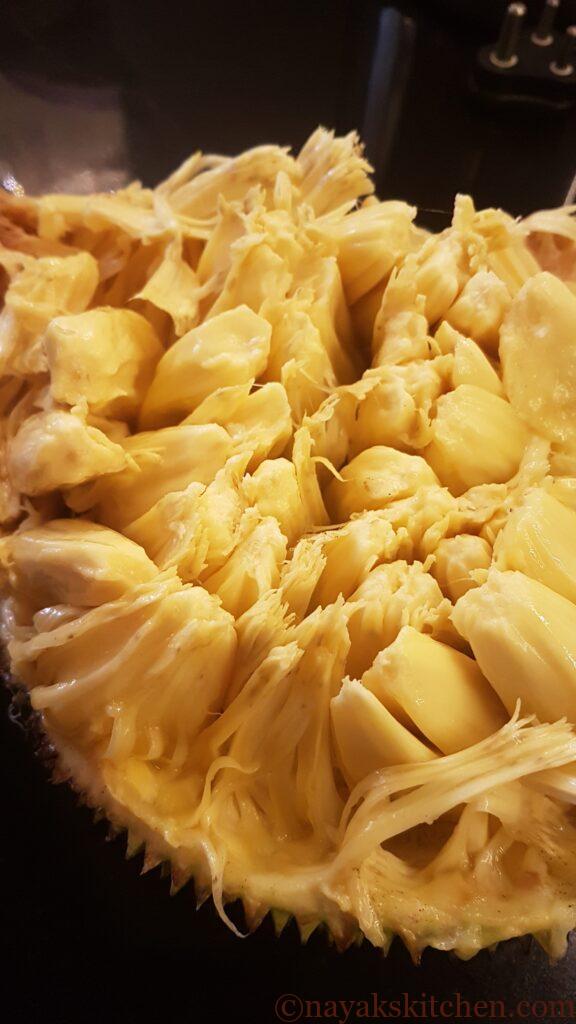
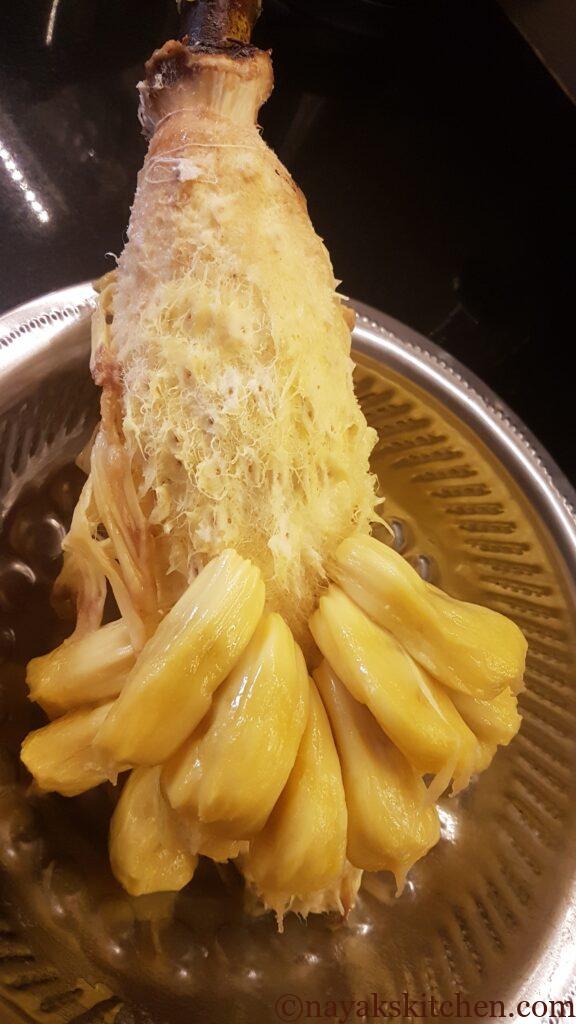
Note:- Use coconut oil or any other cooking oil while cleaning a jackfruit to prevent the sap from sticking to your hands.
Why is the rasaal variety of jackfruit used to make dhonas?
The rasaal jackfruit has soft, pulpy pods or gare. These pods have more juice or ‘mhov’. ‘Mhov’ means honey in Konkani but here it implies the juicy nature of the jackfruit pods. Rasaal gare are also easy to grind into a pulp. They are more sweeter than the kape gare.
How is dhonas (eggless jackfruit cake) traditionally made?
Conventionally, dhonas was cooked directly on fire with a lid placed on top. Over this lid coals from the fire were placed. Hence, this baked the cake perfectly from top to bottom. It would taste heavenly! You can also steam the cake, however the baked version is tastier. I have baked this cake in a pressure cooker without the whistle since baking it in a cooker over the gas browns the cake well.
Also, traditionally homemade coarse rice rava (semolina) was used to make dhonas.
Method of making rice rava: Wash the rice and drain the water completely. Spread it out on a cloth and let it dry. Once dried grind it coarsely in a mixie.
Tips to make a perfect Goan jackfruit cake
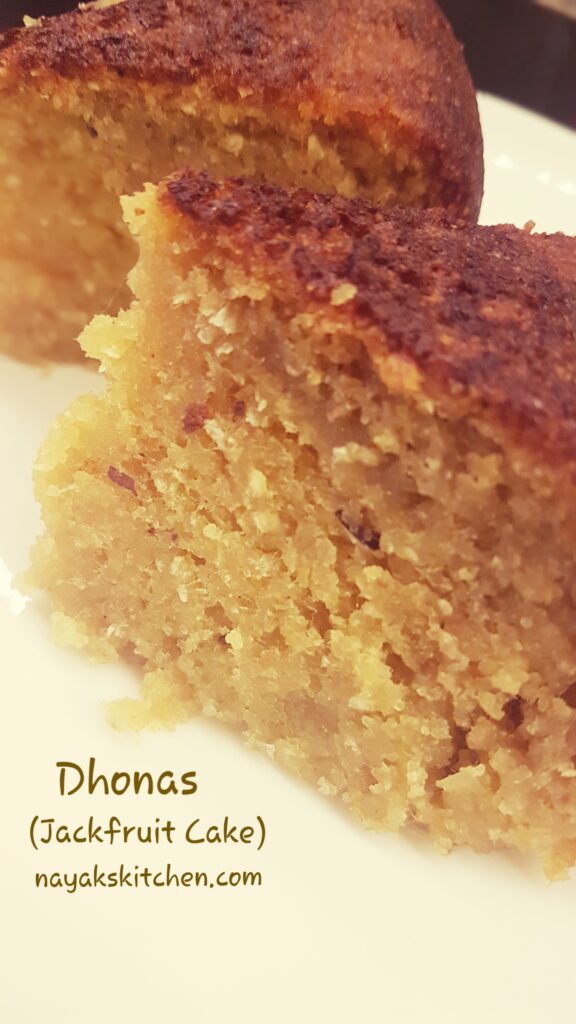
- Follow the ratio and measurements given in the recipe to get the perfect dhonas. However, if you do not have measuring cups, you can use any cup of your choice. But use the same cup to measure all the ingredients as the ratio matters in the recipe.
- Preferably, use the rasaal variety of jackfruit to prepare dhonas. The ‘kape gare’ or pods will be difficult to grind.
- Stick to the given measurements and ratios. Adding more pulp will give you a gooey (sticky) cake. On the contrary, adding more rava (semolina) will give you a dry and crumbly cake.
- Using homemade rice rava (method explained above) gives a perfect, moist, melt-in-the-mouth cake with the right texture.
- 1 cup (250 ml) holds approximately 15 pieces of jackfruit.
- This recipe can be halved or doubled.
How to prepare dhonas or jackfruit cake? (Dhonas/Dhondas recipe)
- Pluck the jackfruit pods from the jackfruit. Next, remove the seeds and keep aside. (Dry the seeds. Subsequently, you can roast them and eat or use them in a variety of recipes.)
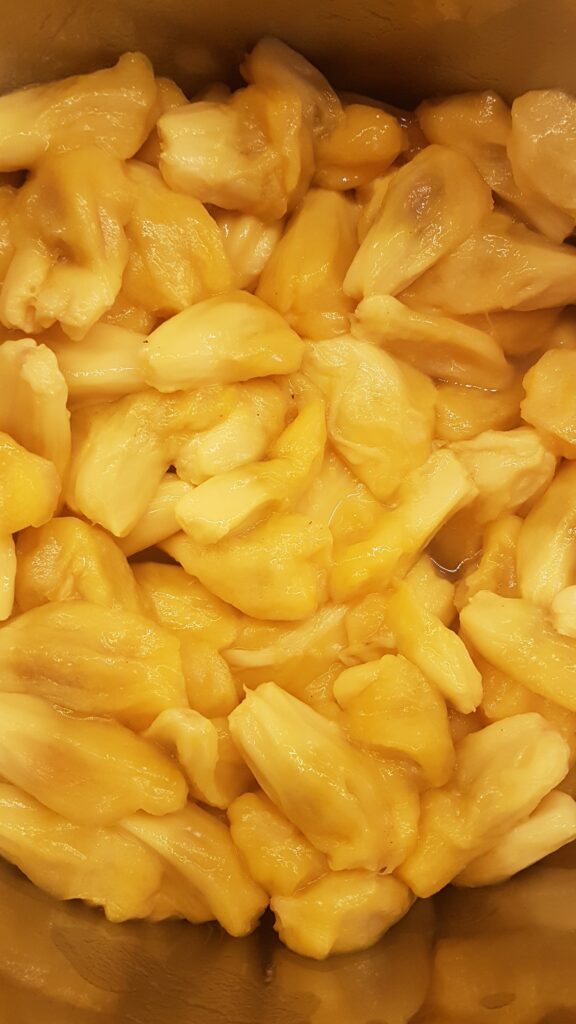
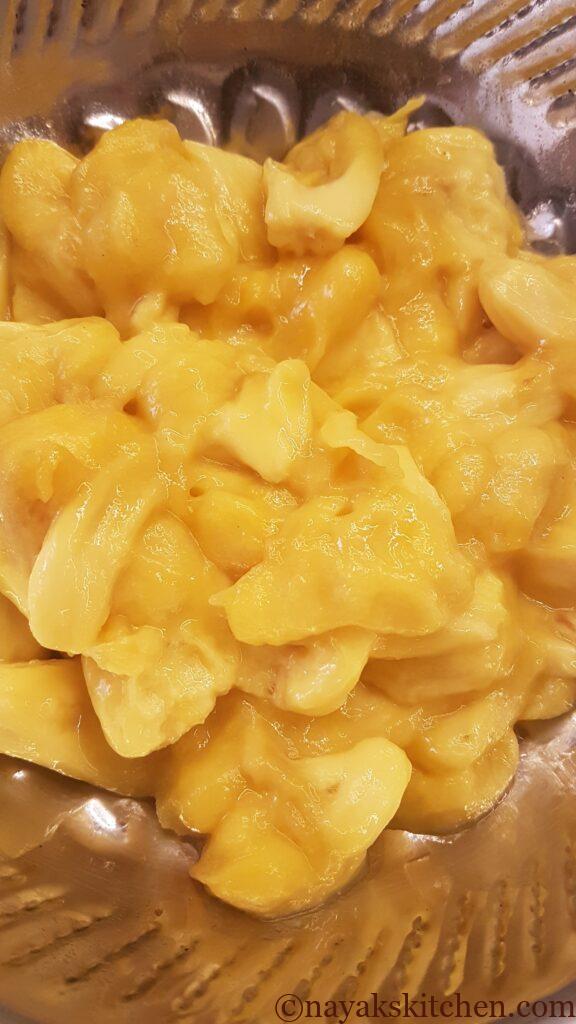
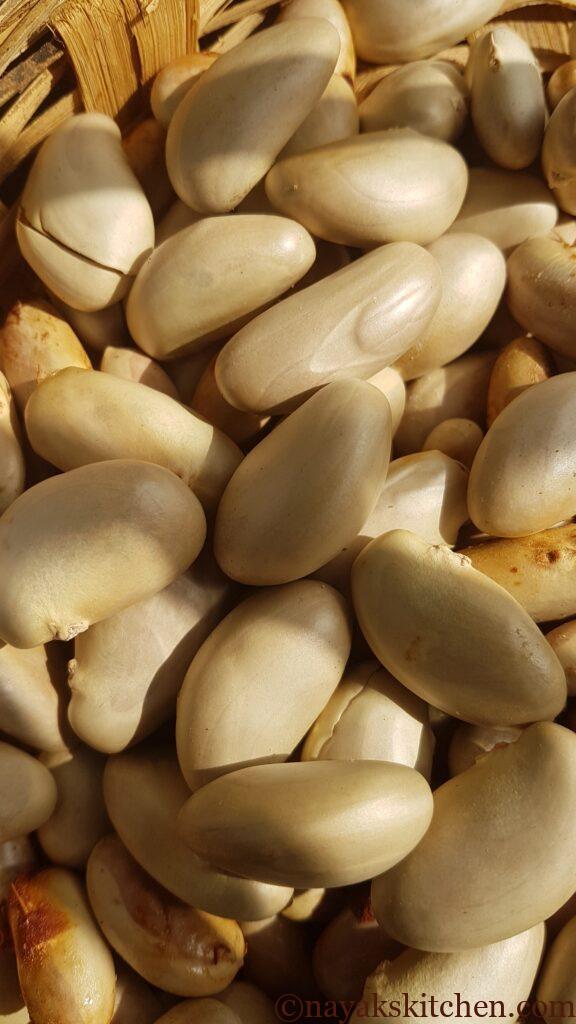
2. Add the deseeded jackfruit to a mixie and grind it to a smooth pulp. Note:- Do not use water while grinding.
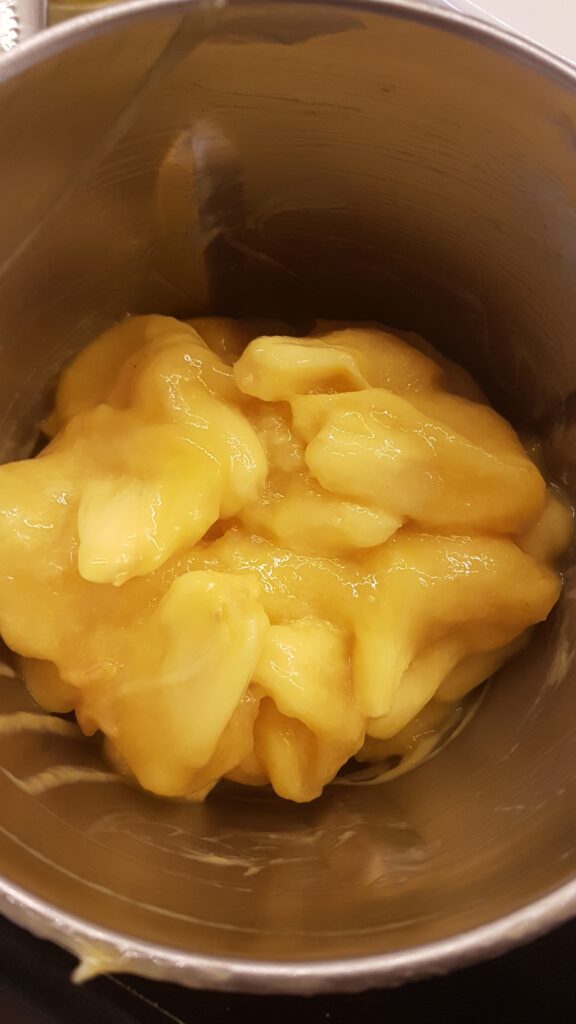
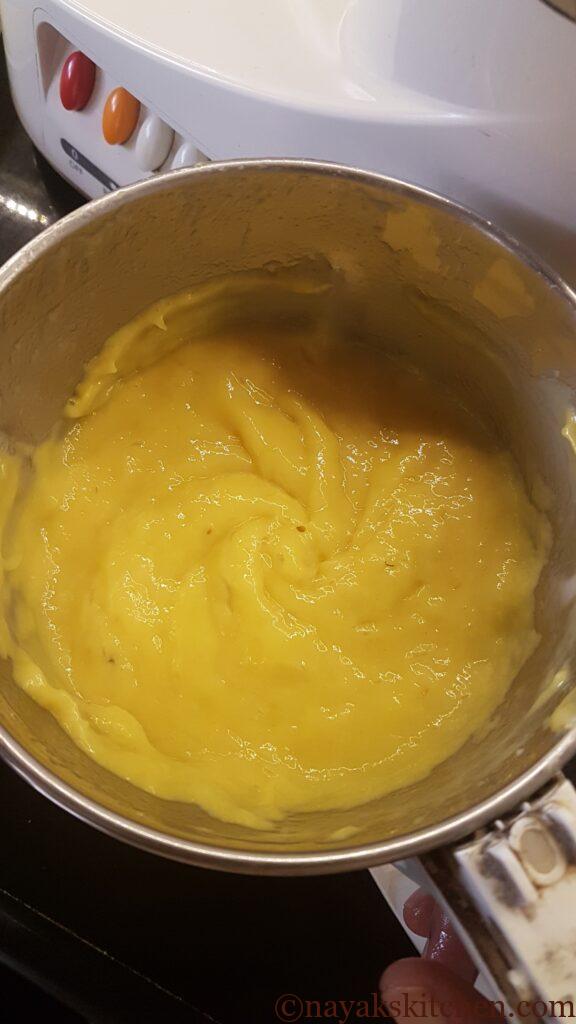
3. Heat ghee in a kadhai (pan). Roast rava (semolina) till it turns light brown and it releases an aroma. Allow it to cool.
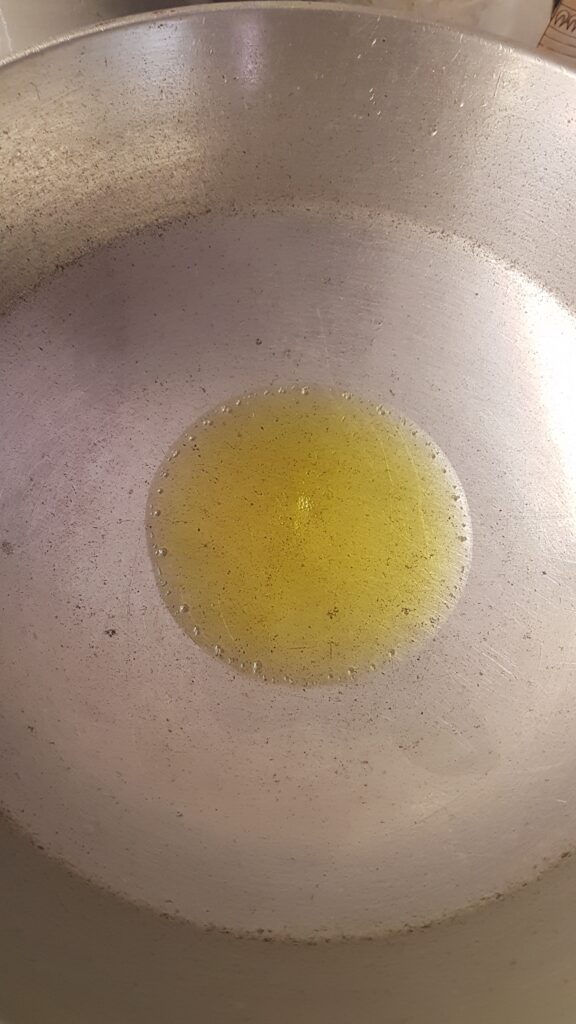
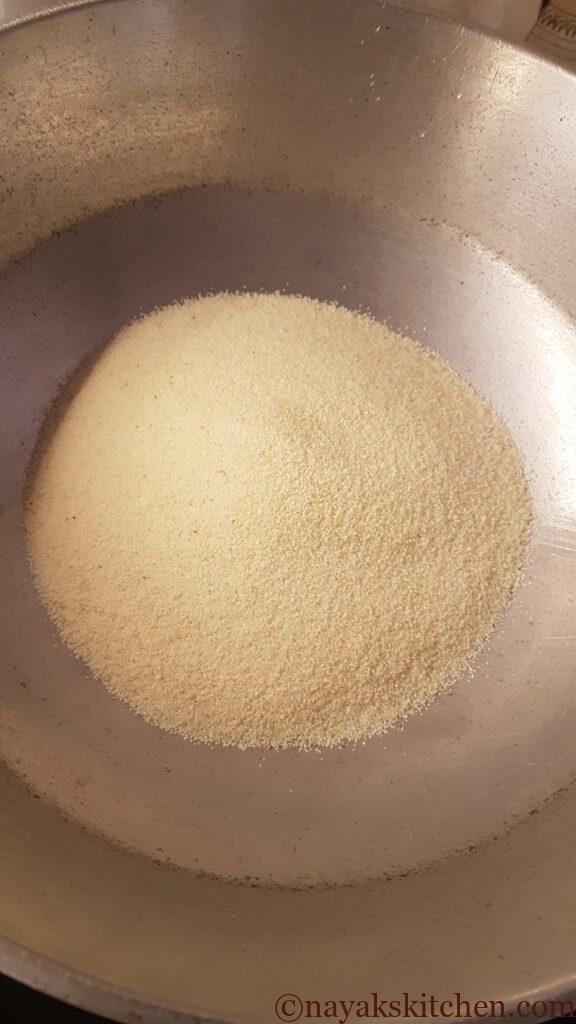
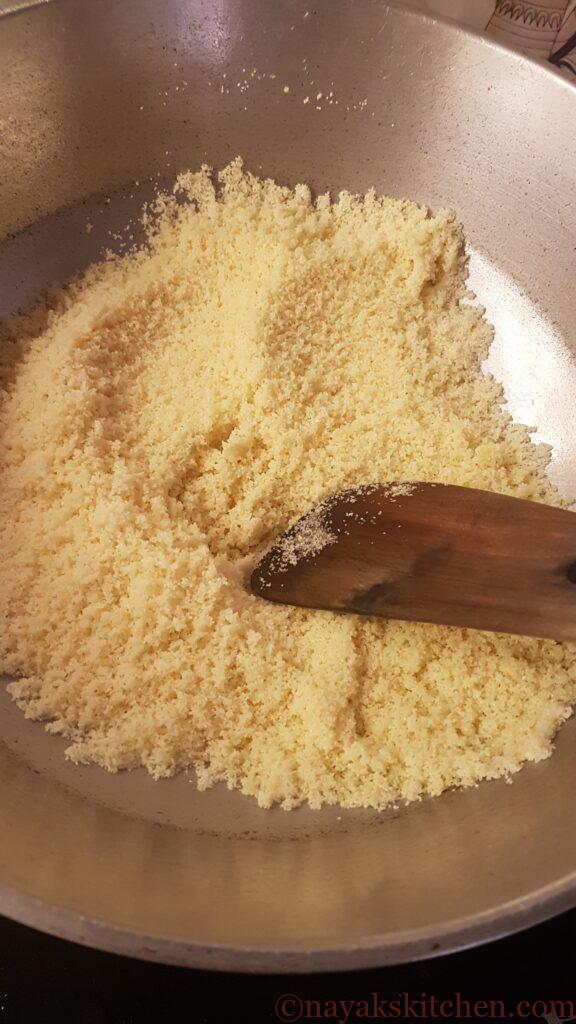
4. Next, take all the ingredients (jackfruit pulp, roasted rava, grated coconut, jaggery, salt) in a large vessel and mix everything well. (You can use the same kadhai in which you roasted the rava.) Also, ensure you have combined all the ingredients well to a uniform mixture.
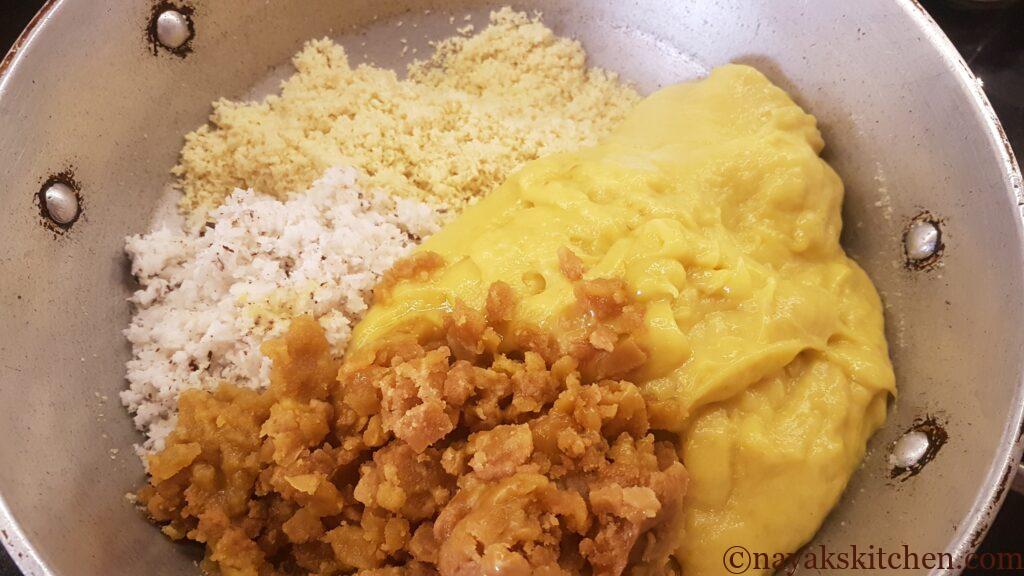
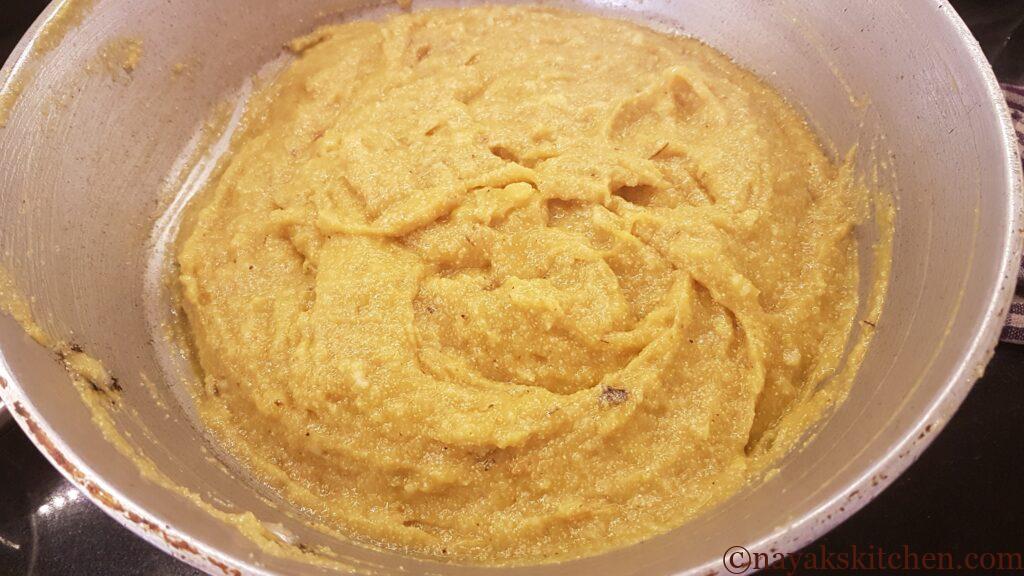
5. Grease a pressure cooker with ghee. Add the mixture and level it up. You can place a turmeric leaf on top of this mixture.
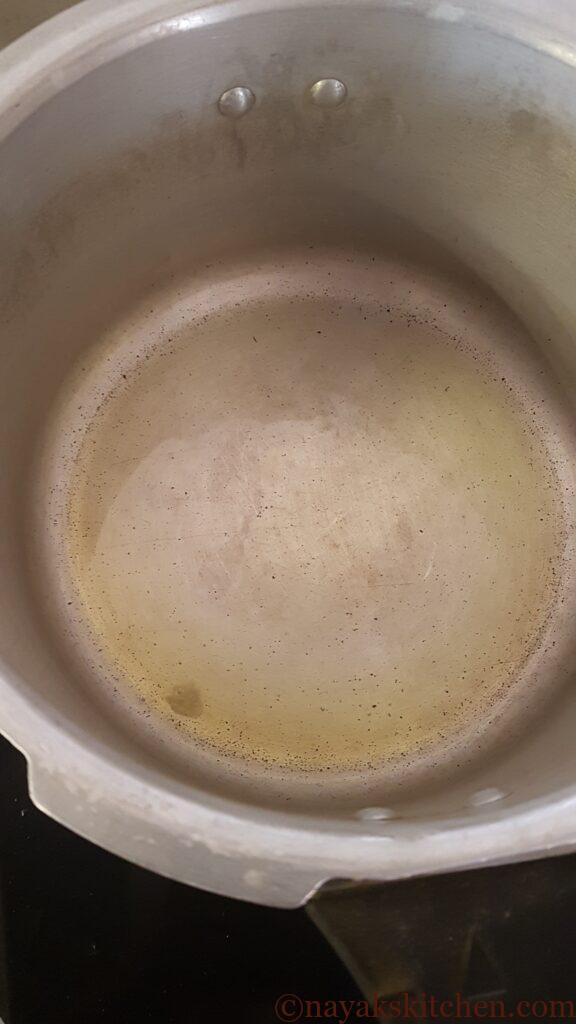
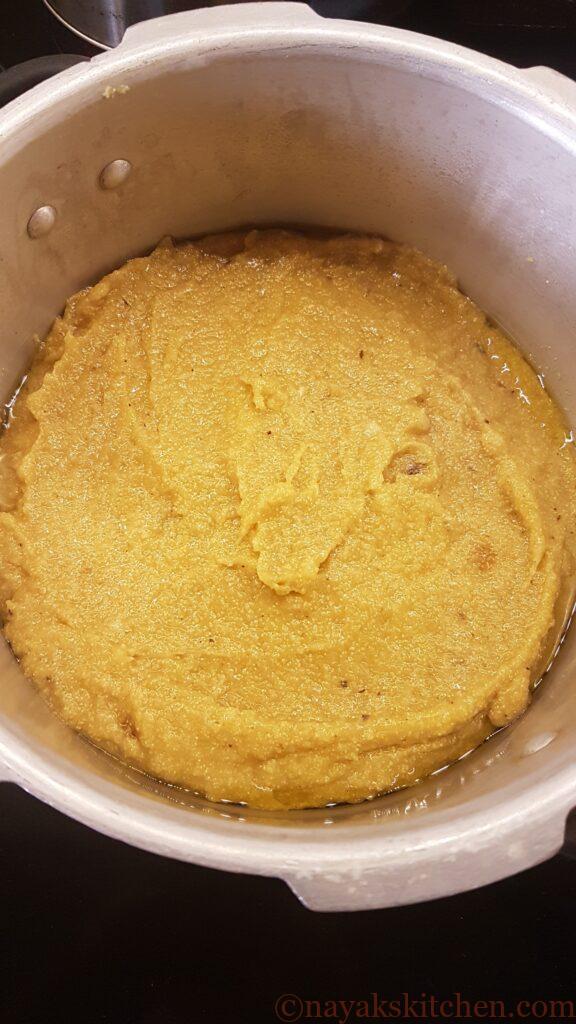
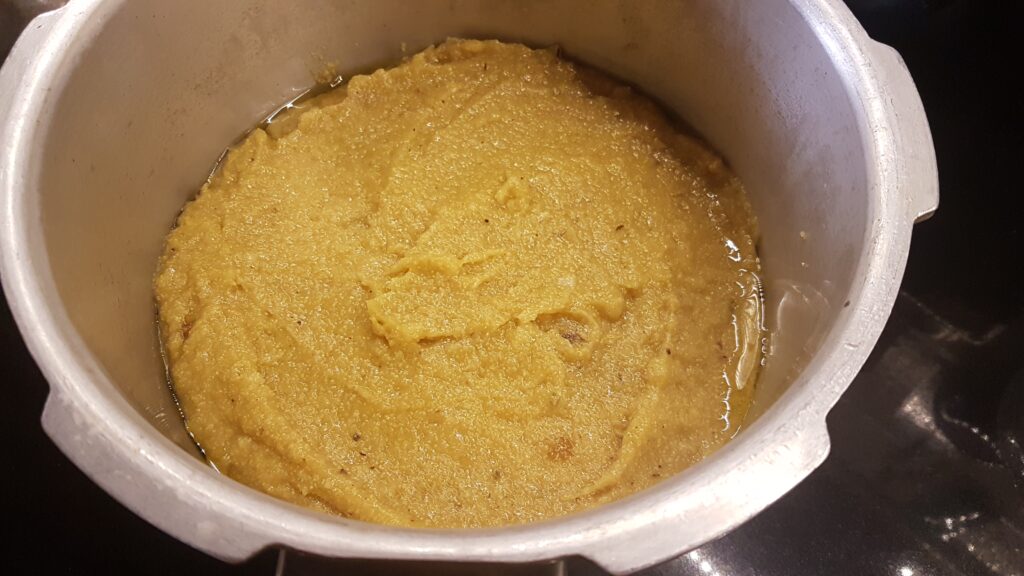
6. Finally, keep the pressure cooker without whistle on the smaller burner over low flame. Bake the cake for about 45 minutes. After 45 mins open the lid. You will see the cake has lightly browned on the sides. Now slowly pour a tablespoon of ghee along the sides of the cooker. This will brown it further. Close the lid and keep for another 15 mins.
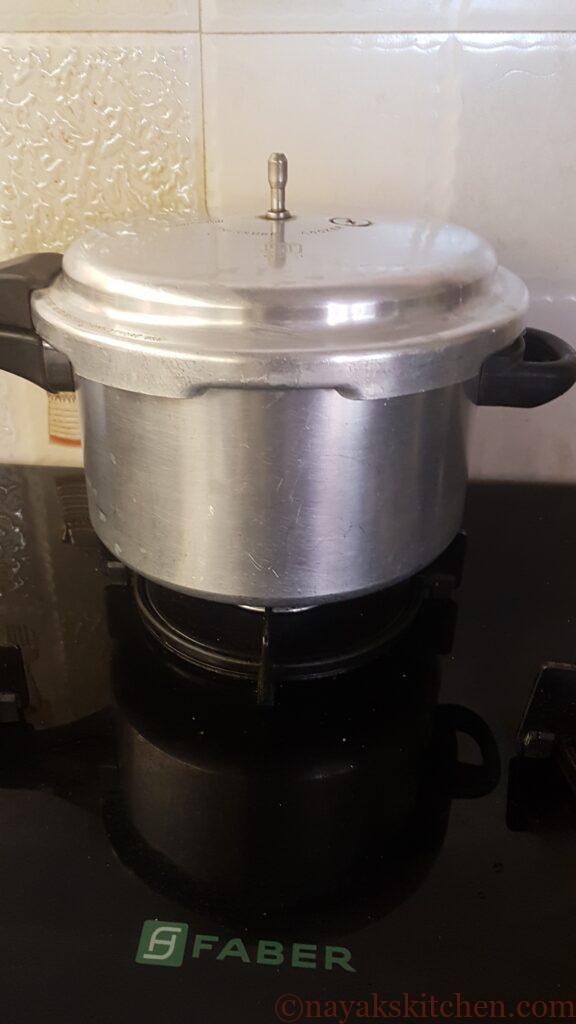
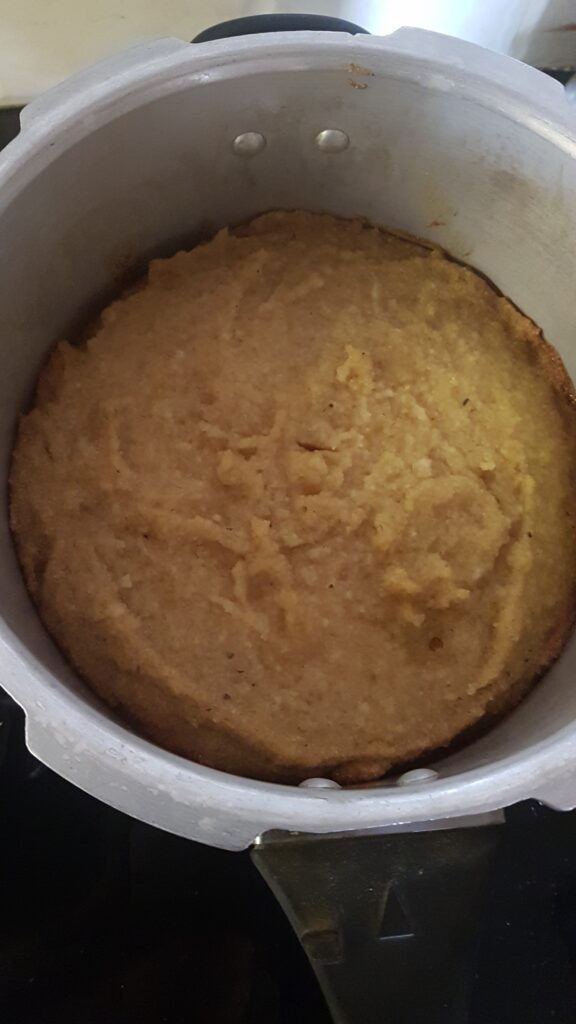
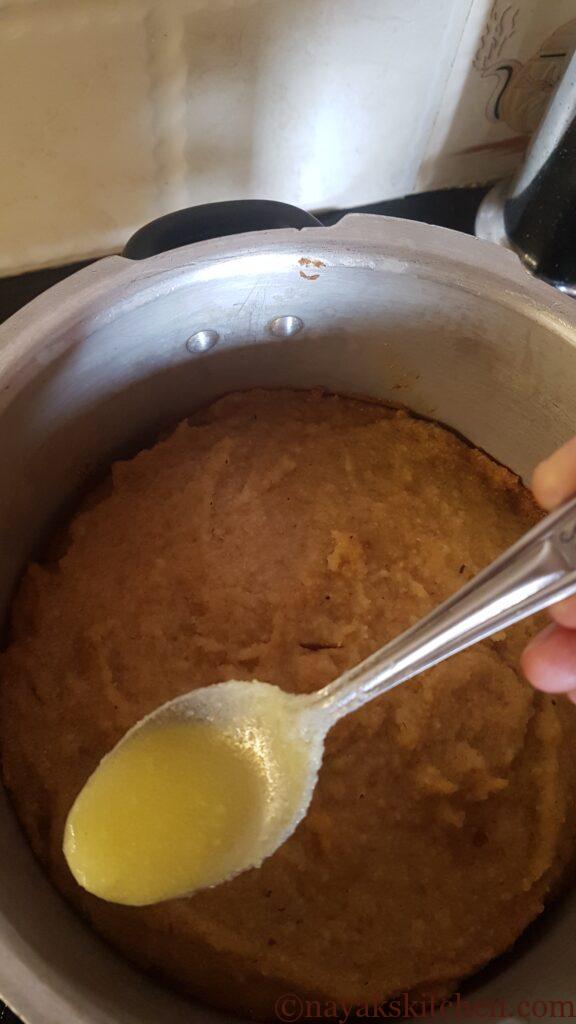
7. Switch off the gas after 15 mins. Allow the dhonas to cool. Do not try to demould the cake when hot. Once cooled, slide a knife along the edges of the cooker. Keep a plate on top of the cooker and carefully turn it upside down. Slice the cake and serve.
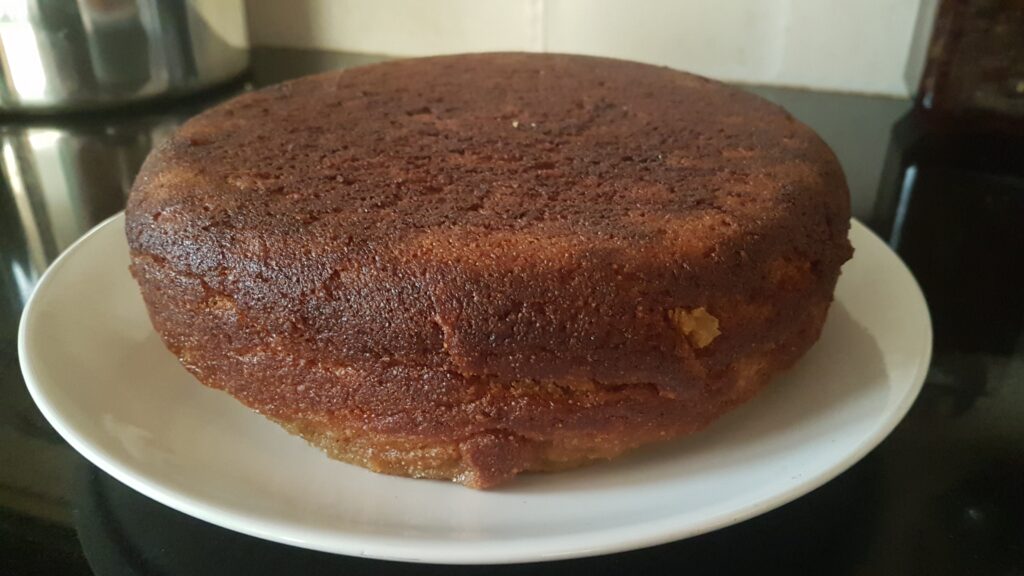

Dhonas | Jackfruit Cake | Goan-style Pansachi Bhakri
Course: Sweet, CakesCuisine: GoanDifficulty: Medium30
minutes1
hour1
hour30
minutesDhonas or jackfruit cake is a classic Goan recipe prepared using jackfruit pulp, semolina, jaggery, grated coconut and ghee.
Ingredients
1 cup = 250 ml
1 tbsp = 15 ml
1 tsp = 5 ml
Jackfruit pulp – 4 cups
Rava (Semolina) – 2 cups
Jaggery – 2 cups
Grated Coconut – 2 cups
Ghee – 4 tbsps (to roast rava)
1 tbsp (for greasing)
1 tbsp (for pouring along the sides of the cake)Salt – 1 tsp
Directions
- Pluck the jackfruit pods from the jackfruit. Next, remove the seeds and keep aside. (Dry the seeds. You can roast them and eat or use them in a variety of recipes.)
- Add the deseeded jackfruit to a mixie and grind it to a smooth pulp. Note:- Do not use water while grinding.
- Heat ghee in a kadhai (pan). Roast rava (semolina) till it turns light brown and it releases an aroma. Allow it to cool.
- Now, take all the ingredients (jackfruit pulp, roasted rava, grated coconut, jaggery, salt) in a large vessel and mix everything well. (You can use the same kadhai in which you roasted the rava.) Ensure you have combined all the ingredients well to a uniform mixture.
- Grease a pressure cooker with ghee. Add the mixture and level it up.
- Keep the pressure cooker without whistle on the smaller burner over low flame. Bake the cake for about 45 minutes. After 45 mins open the lid. You will see the cake has lightly browned on the sides. Now slowly pour a tablespoon of ghee along the sides of the cooker. This will brown it further. Close the lid and keep for another 15 mins.
- Switch off the gas after 15 mins. Allow the dhonas to cool. Do not try to demould the cake when hot. Once cooled, slide a knife along the edges of the cooker. Keep a plate on top of the cooker and upturn it. Slice the cake and serve.
Notes
- 1 cup (250 ml) holds approximately 15 pieces of jackfruit.
- This recipe can be halved or doubled.
- Follow the ratio and measurements given in the recipe to get the perfect dhonas. However, if you do not have measuring cups, you can use any cup of your choice. However use the same cup to measure all the ingredients as the ratio matters in the recipe.
- Preferably, use the rasaal variety of jackfruit to prepare dhonas. The ‘kape gare’ or pods will be difficult to grind.
- Stick to the given measurements and ratios. Adding more pulp will give you a gooey (sticky) cake. On the contrary, adding more rava (semolina) will give you a dry and crumbly cake.
- Using homemade rice rava (method explained in the post) gives a perfect, moist, melt-in-the-mouth cake with the right texture.
